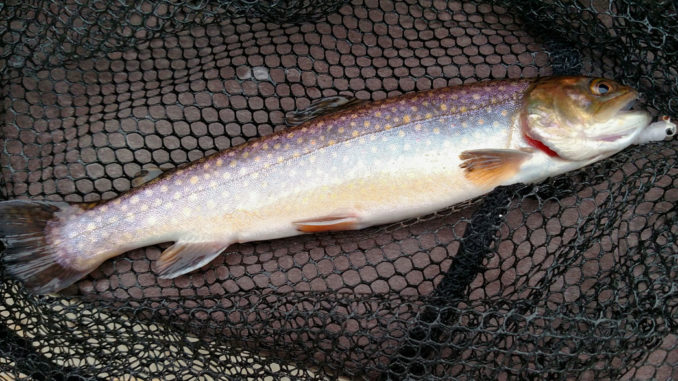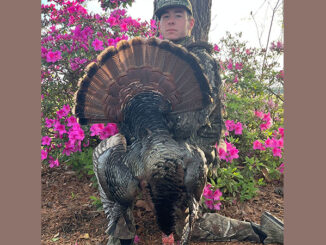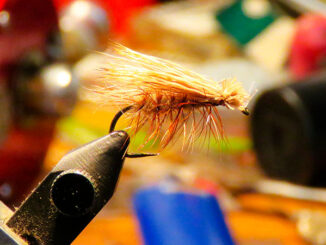
Good rains have trout waters in great shape
The summer of 2017 has been a far cry from 2016, when a record drought reduced many trout streams in North Carolina and South Carolina to trickles. Abundant spring and summer rains have rejuvenated streams and, best of all, the trout fishing.
Even when fishing conditions are good, it pays to follow a few basic rules.
Wear drab clothing — colors that blend in well with your surroundings, nothing white or bright — down to your socks. Keep a low profile and fish upstream so trout are less likely to see you coming. Use long leaders, a minimum of 9 feet, and cast from behind rocks or other natural obstructions. If you see fish darting around when you move in the water, forget about that particular stretch of water. No amount of coaxing will result in a strike. Learn your lesson and move on to the next stretch.
Cast close to banks, under low-hanging mountain laurel and rhododendron bushes. You’ll lose a few flies and spend a lot of time getting line and flies out of bushes, but that’s part of the fishing experience.
In hot weather, trout stay in areas of the stream that are cool and have the most oxygen, places that have bubbly whitewater, especially little pools below ledges, splash pools and waterfalls. Let your fly drop naturally into bubbly water or let it drift through riffles. Look for small tributaries that feed cooler water into the main stream. Think like a trout and fish the areas you’d prefer to be in during the heat of the day.
Fish smaller streams; the ones with the most cover have the coolest water. Small streams with a heavy canopy can be fished all day. Save the large, open streams for early morning and evening fishing.
Trout feed during the comfortable times of the day: early morning before the water heats up and late evening when the water cools down. For dry-fly fishing, these are the most-productive times, but sporadic hatches occur all during the day, only in fewer numbers. For morning dry-fly fishing, Blue-Winged Olive, female or male Adams (winged or parachute), Light Cahill, and parachute Pheasant Tail are effective patterns. Usually, Nos. 16 or 14 work well. For late evening, midges are especially effective in gray, cream or black. Nos. 18 to 22 work best. Some patterns, particularly a Cahill or Adams, can be fished all day. Experiment until you get a strike, then stick with that pattern.
Nymph patterns can be fished all day, but they require more skill and patience than dry flies. Strikes can be subtle and difficult to detect unless you’ve done a lot of nymph fishing. Sometimes, a strike will be little more than a slight hesitation of the leader. If your nymph-fishing experience is limited, use a commercial strike indicator and attach it to the leader about 2 feet above the fly. A piece of yarn or patch of cotton attached to the leader works just as well. Watch the indicator as it floats; if it hesitates or moves to one side or the other, raise your rod tip. You’ve likely had a strike.
Dry flies also make excellent strike indicators, and they give you an extra edge in the water. Sometimes, a trout will hit the dry fly instead of the nymph. When using a dry fly as a strike indicator, use a section of leader and tie the nymph to the shank of the main hook and use the nymph as a dropper. If the stream is shallow, the dropper should hang 3 to 6 inches below the dry fly, 12 inches for deeper water. The nymph should be small enough that it doesn’t drag the dry fly down. If you’re using a No. 14 or 16 nymph, for example, use a No. 12 or larger dry fly.
Suggested nymph patterns are Secret Weapon, Sheep Fly, Pheasant Tail (nymph or emerger), yellow Tellico and Stone Fly.
Terrestrials, the ubiquitous bugs of summer — ants, beetles, crickets, grasshoppers, caterpillars, inchworms, bees — provide a constant and substantial food source for trout. They can be fished up until the first frost, and they can be fished either wet or dry. Cast them close to banks, around bushes and anywhere where grass grows along the stream. Fish the sizes closest to the natural thing: Nos. 10 or 8. To get terrestrials — an inchworm, for example — use a bead-head or tie on extra weight to the leader just above the fly.
Thunderstorms are a natural part of summer in the mountains. Usually, however, they come in fast and end quickly. If you hear thunder, move off the stream. Water is no place to be when lightning is flashing. After the storm has passed, the water may be dingy for a short while, especially on high-gradient streams. This is the ideal time to switch to streamers: Sculpin, Woolly Bugger, Muddler Minnow, Dace and other patterns that imitate swimming aquatic life. Streamers also work very well in deep pools, places where big brown trout are more likely to be. Strip them through the water or let them float in the current. Strikes are less frequent on streamers, but when you get a strike, it’s usually a big fish.
One last note: when mountain dwellers speak of warm weather, they’re talking about temperatures in the 80s. If temperatures climb above to the 90s, which is rare, then it’s really hot. Even during hot periods, mountain trout streams are the coolest, most refreshing places to be.





Be the first to comment